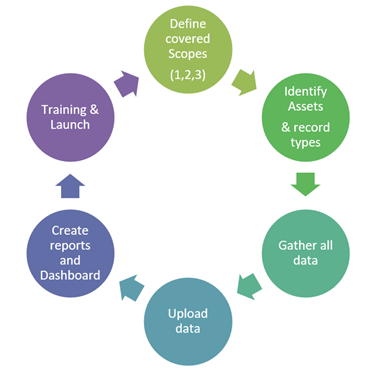How to Start Carbon Emissions Accounting
“We’re all in this together,” was the mantra for 2020 as the world faced the COVID-19 pandemic. The same is true for the journey to becoming carbon-neutral and in 2021, it’s not just the people of the world, it’s businesses too.
The planet is witnessing an alarming trend as climate change is creating new challenges that worsen the problem. The COVID-19 pandemic caused a reduction of carbon emissions in 2020, and unfortunately, that’s going to be short-lived. Once the vaccine is administered, more people will be returning to the workplace and resuming travel plans, and carbon emissions will be on the rise. Additionally, fires in Siberia, Russia, last year burned forests and melted the permafrost, releasing carbon monoxide and methane, both potent greenhouse gases, into the atmosphere.
It’s time for corporate leadership to escalate sustainability to the top of their priority lists, become accountable for their carbon emissions, and measure the impact they have on climate change.
The Right Tool for the Job
Businesses of all sizes need to start their carbon emissions accounting now. As a Salesforce partner, we’ve implemented Salesforce Sustainability Cloud, for ourselves and our clients. The reports deliver information that helps everyone better understand how the actions of employees and the decisions of leadership affect the world.
The basic steps to carbon emissions accounting include identifying assets, gathering utility bills, and use the right GHG Protocol Corporate Accounting and Reporting Standard. Let’s take this one step at a time.
The Greenhouse Gas (GHG) Protocol has broken down carbon emissions into 3 categories, or scopes. Scope One “All Direct Emissions” and Scope Two “Indirect Emissions” both revolve around assets owned or used by an organization. Scope Three “All Other Indirect Emissions” focuses on 3rd-party vendors such as a supply chain or outsourced distribution. Since Scope Three is more difficult to track and calculate, our implementations are mainly for Scope One and Scope Two.
Here are simplified explanations of Scope One and Two. Usually, an organization’s owned assets are managed in Scope One. The first step is to take an inventory of all carbon emitting assets, the most obvious being buildings, cars and/or trucks. Additional assets could include gas boilers and air conditioning units. Once the list is complete, it’s time to gather energy consumption information which is found on utility bills.
For Scope Two, the list may be similar only these items are leased rather than owned. For example, the electric bill for a workplace or warehouse that the organization does not own. The heating and cooling units in these locations are not owned by the organization, however, they do “own” the carbon accounting from their usage. Again, utility bills will have the information needed for accounting.
The next step is to use the correct reporting factors. There are several accepted factors for calculating carbon emissions, and the factors change approximately every two years, which makes it difficult to manage and ensure accuracy. The good news is that Sustainability Cloud provides a logical workflow that is optimized for carbon accounting. It guides from start to finish, from identifying assets to include in the carbon inventory, to easily selecting the correct GHG factors. The system is preloaded with most of the factors and automatically updates the calculations when the factors change.
After all the data is entered, uploaded, or integrated, and the correct emission factors are selected, Salesforce Sustainability Cloud delivers reports and dashboards with the accounting results that clearly state an organization’s carbon footprint.
The final step is to use the reports to make better decisions and create company-wide awareness and actions to reduce the carbon footprint. The goal for any organization is to become carbon neutral, where there is no net release of carbon dioxide through offsetting actions such ad planting trees or funding equal carbon saving anywhere on the planet.


